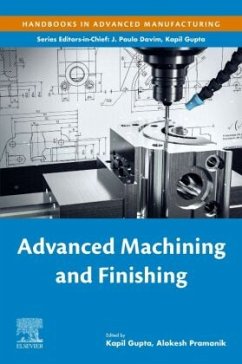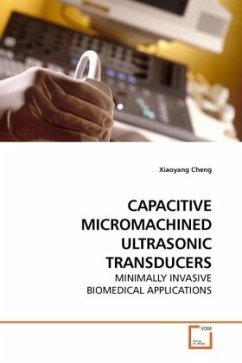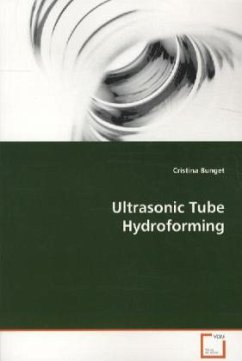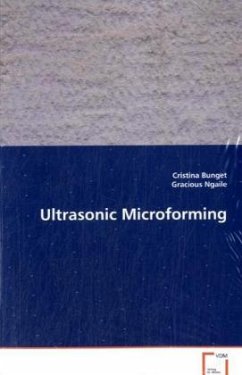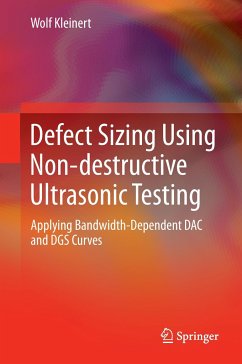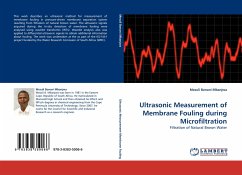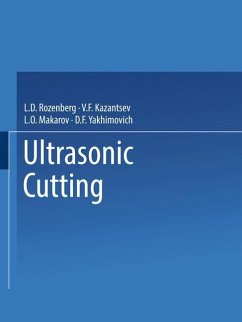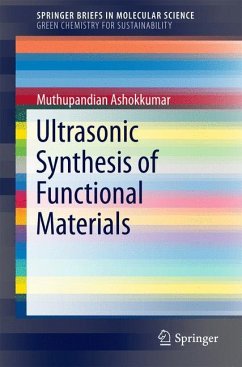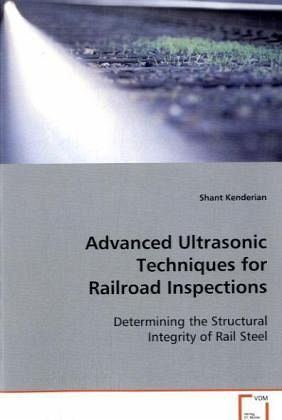
Advanced Ultrasonic Techniques for Railroad Inspections
Determining the Structural Integrity of Rail Steel
Versandkostenfrei!
Versandfertig in 6-10 Tagen
39,99 €
inkl. MwSt.

PAYBACK Punkte
20 °P sammeln!
Laser generated ultrasound and air-coupled ultrasonicdetectors are used to develop an inspection techniquefor the railroad industry. The Laser Air HybridUltrasonic Technique (LAHUT) has the advantage ofperforming inspections without establishing contactwith or the need to come close to the inspectedstructures. This feature makes it possible to performdynamic inspections of tracks from a moving train andstationary wayside inspection of wheels on a passingtrain. The study considers the most critical flawtypes in railroad tracks and wheels. Some are verydifficult to detect with currently availabl...
Laser generated ultrasound and air-coupled ultrasonic
detectors are used to develop an inspection technique
for the railroad industry. The Laser Air Hybrid
Ultrasonic Technique (LAHUT) has the advantage of
performing inspections without establishing contact
with or the need to come close to the inspected
structures. This feature makes it possible to perform
dynamic inspections of tracks from a moving train and
stationary wayside inspection of wheels on a passing
train. The study considers the most critical flaw
types in railroad tracks and wheels. Some are very
difficult to detect with currently available
technology, others are not possible without a
handheld device. The second part of the book uses a
contact ultrasonic method to monitor microstructural
effects during fatigue cycling of railroad steel. Two
experiments configurations are presented. One is very
sensitive to microcracks. Once detected, the
remainder fatigue life may be predicted. The second
technique is sensitive to dislocations on an atomic
level. As dislocation loop length and density begins
to multiple, certain changes are detected in the
velocity and attenuation of the acoustic signal.
detectors are used to develop an inspection technique
for the railroad industry. The Laser Air Hybrid
Ultrasonic Technique (LAHUT) has the advantage of
performing inspections without establishing contact
with or the need to come close to the inspected
structures. This feature makes it possible to perform
dynamic inspections of tracks from a moving train and
stationary wayside inspection of wheels on a passing
train. The study considers the most critical flaw
types in railroad tracks and wheels. Some are very
difficult to detect with currently available
technology, others are not possible without a
handheld device. The second part of the book uses a
contact ultrasonic method to monitor microstructural
effects during fatigue cycling of railroad steel. Two
experiments configurations are presented. One is very
sensitive to microcracks. Once detected, the
remainder fatigue life may be predicted. The second
technique is sensitive to dislocations on an atomic
level. As dislocation loop length and density begins
to multiple, certain changes are detected in the
velocity and attenuation of the acoustic signal.



